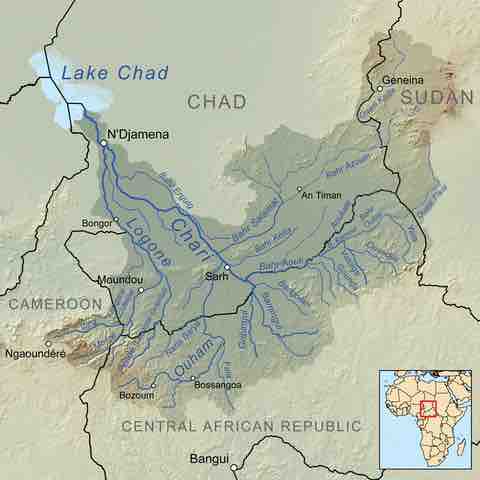The Sao civilization flourished in Middle Africa from the 6th century BCE to as late as the 16th century CE. They lived by the Chari River, south of Lake Chad, in parts of modern-day Cameroon and Chad.

Chari River
Region including Lake Chad, Cameroon, and environs.
For more than 2,000 years, the Chadian Basin has been inhabited by agricultural and sedentary people. The region became a crossroads of civilizations. The earliest of these were the legendary Sao, known today only from artifacts and oral histories. They left no written records and are known only through archaeological finds and the oral history of their successors in the territory. Unfortunately, little is known about the Sao's culture or political organization. One theory of the origin of the Sao states that they descended from the Hyksos, who conquered Ancient Egypt and later moved south, from the Nile valley to mid-Africa, after fleeing invaders.
Sao artifacts show that they were skilled workers in bronze, copper, and iron. They made bronze sculptures and terra cotta statues of human and animal figures, funerary urns, and highly decorated pottery. The Sao were made up of several patrilineal clans who were united into a single polity with one language, race, and religion.
Sao Sculpture
A Sao sculpture from Chad.
The Sao's demise may have come about due to conquest, Islamization, or a combination of the two. Traditional tales say that the Sao west of Lake Chad fell to "Yemenites" from the east. If true, the newcomers may have been Arab Bedouin or Sayfuwa raiders coming from the east, who moved into the region in the 14th century CE. Although some scholars estimate that the Sao civilization south of Lake Chad lasted until the 14th or 15th century CE, the majority opinion is that it ceased to exist as a separate culture sometime in the 16th century CE.
The Sao fell to the Kanem Empire, the first and longest-lasting of the empires that developed in Chad's Sahelian strip by the end of the 1st millennium CE. The power of Kanem and its successors was based on control of the trans-Saharan trade routes that passed through the region.
Today, several ethnic groups of northern Cameroon and southern Chad, particularly the Sara, claim to be descendants of the Sao. The Sara are an ethnic group who reside in southern Chad and Central African Republic. They make up 27.7% of Chad's total population (year 1993 Census). Other ethnic groups in the Lake Chad basin area, including the Buduma, Gamergu, Kanembu, Kotoko and Musgum, also claim to be descended from the Sao.